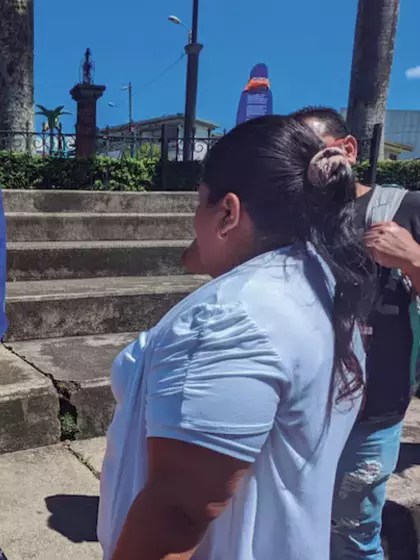Guatemala: The figures and lives truncated by armed violence.

In 2020, Guatemala reported 1,977 firearm-related homicides. Just two years later, this figure shot up to 2,488. With the data in hand, it is plain to see that firearms play a central role in the rising trend in homicide this Central American country has been experiencing since 2020.
Such is one of the conclusions in the Diagnosis on the context of armed violence in Guatemala in 2022 issued by the Vice Ministry Violence and Crime Prevention of the Ministry of Governance in Guatemala (MINGOB), with technical support by the InfoSegura Regional Project, an initiative of the United Nations Development Programme (UNDP) in Latin America and the Caribbean in partnership with the United States Agency for International Development (USAID).
Despite a downturn between 2017 and 2020, the latest data reveal an upswing in the number of homicides and injuries with firearms since 2020. One of the most alarming aspects is the proportion of violent incidents where firearms were used. In 2022, 83 per cent of homicides and 60.8 per cent of injuries involved the use of firearms. These figures are significantly higher than 2020, suggesting an increased presence of firearms in the Guatemalan population.
Incidence by regions reveals a disquieting concentration of armed violence throughout the east, west and centre of the country, with the department of Guatemala emerging as the most violent. Concretely, 46.1 per cent of firearm-related homicides were registered in the capital, for a total of 1,146 deaths and a rate of 31.8 homicides per 100,000 population. Next in line are Escuintla with 300 homicides, 36.9 per 100,000 population, and Izabal, with 114 and 25.2.
According to the report, this geographic concentration could serve as a guideline for assigning resources and implementing specific prevention and response strategies to this problem. Focusing efforts on areas with higher incidence could be key for greater effectiveness in combating armed violence.
As for the type of weapon used, the report indicates there is a preponderance of homicides by firearm. In the period from 2017-2022, records show 7.5 more victims of homicide by firearm than by sharp weapon. This again underscores the fact that homicide goes hand in hand with access to firearms in Guatemala. Firearms are also the cause of a greater number of injuries, 12,633 compared to 5,699 by sharp weapon and 2,143 by a blunt object.
The number of firearms in circulation is still on the rise. It is estimated that in 2022 there were 71,569 valid licences and 54 thousand registered firearms, which is double the number since 2020. Citizen and business demand for private security has been a driver for the weapons market in the country. Between 2017 and 2022 the number of registered firearms amount to 191,366 weapons, 67.2 per cent of them held by private citizens, 30.1 per cent by businesses and 2.7 per cent by the institutions of the State.
Establishing the exact number of illegal weapons in circulation in Guatemala is an additional difficult challenge. This notwithstanding, seizures indicate that these are secondary in comparison with legal weapons. The premise that legal weapons might be transferred or diverted to the illegal market underscores the importance of regulating firearm importation, sale and distribution.
A telling insight in the analysis is that the majority of reported homicides and firearm injuries involve registered weapons. This suggests that legal weapons may be trigger for gun violence. Moreover, departments with high illegal arms seizures do not necessarily exhibit high incidences of homicide or injury, suggesting that regulating the legal supply will go a long way towards reining in the problem.
Beyond the human and social impact, gun violence represents a significant economic burden for the country. In terms of production, the study estimates that homicides cost Guatemala 496 millions of dollars in 2019.
The primary conclusion in the analysis is the benefit of reducing the number of firearms circulating legally in the country. This will involve disarmament campaigns, a review of the prerequisites for legal bearing of arms and the sale of guns and ammunition.
Finally, InfoSegura’s joint work with the Vice Ministry for Violence and Crime Prevention of the Ministry of Governance of Guatemala notes that building capacity at the institutions in charge of security and justice is crucial for citizens to trust the authorities and feel no need look for their own safety by recurring to weapons.
This assessment was prepared as a starting point for drafting the National Armed Violence Prevention Strategy, in the context of the National Gun Violence Prevention Commission, under MINGOB leadership.
This kind of joint UNDP and government action contributes to the efforts to advance the 2030 Agenda for Sustainable Development, specifically SDG 16 on peace, justice and strong institutions, in pursuit of the goals of putting an end to all forms of violence, including gun violence and of building national institutions’ capacity to prevent violence, particularly in developing countries.





